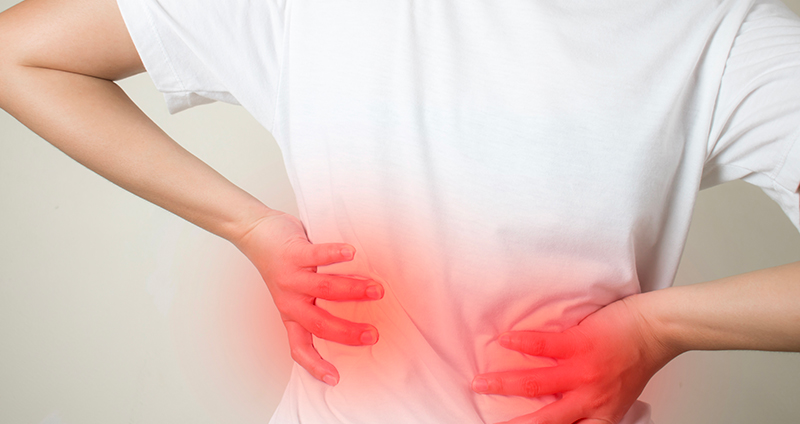If you have felt muscle tenderness, and sudden pain in a certain area of your body along with symptoms such as fatigue and disrupted sleep, you know how painful and uncomfortable musculoskeletal pain is. This is a type of pain that affects the muscles, ligaments, tendons, bones, and other connective tissues in the body. It can be acute or chronic and may range in severity from mild to severe. Minor musculoskeletal pains usually affect just one area of the body, such as the back. However, you can have it throughout the body if you are affected by a widespread condition such as Fibromyalgia. Through this comprehensive guide, let us understand an overview of musculoskeletal pain, its causes, symptoms, diagnosis, and treatment options.
What are the different types of musculoskeletal pain?
The most common types of musculoskeletal pain are:
Joint Pain: Joint pain is often accompanied by stiffness, inflammation and restricted range of motion. Arthritis is one such condition that causes these symptoms. Those affected by arthritis sometimes develop chronic pain, which may hinder their day-to-day activities.
Muscle Pain: Also known as Myalgia, this type of pain can be caused by injuries to the muscles, impaired blood flow to the muscles, or cramps. Infections can also cause joint pain.
Ligament and Tendon Pain: Ligaments and tendons are bands of tissue that connect the bones to other bones or muscles. Injuries caused to tissues through sprains, strains, or inflammation can result in pain. Overuse or sudden, awkward movements may cause the ligaments and tendons to stretch or tear.
Nerve Compression Pain: This type of pain occurs due to health conditions that put pressure on the nerves, such as carpal tunnel syndrome, tarsal tunnel syndrome, and cubital tunnel syndrome. Pressure on the nerves can also be caused by overuse, heavy leaning on elbows, and other conditions like arthritis.
Back Pain: This is the most common type of musculoskeletal pain. It may have no specific cause. Back pain may also be the result of wrong posture, an injury or illness. Conditions such as strain in the muscles, disc fracture, and inflammation may also lead to back pain.
Chest Pain: costochondritis – inflammation of the cartilage between the ribs and the breast bone is also a common cause of musculoskeletal pain occurring in the chest.
Bone Pain: Trauma caused by a fracture or injury is one of the most common causes of bone pain. Bone pain can also be the result of an infection in the bone, a tumor that has spread to the bone, or other systemic disorders. You may feel tenderness or an aching sensation at the bone site.
What causes musculoskeletal pain?

Injury: An injury to the bones, muscles, ligaments, or tendons can cause pain in the affected area. This can be due to an accident, overuse, or disease.
Arthritis: Arthritis is a condition that causes inflammation in the joints, which can lead to pain and stiffness.
Osteoporosis: Osteoporosis is a condition that causes the bones to become brittle and weak, making them more susceptible to easy fractures.
Tendinitis: Tendinitis is the inflammation of a tendon, which can cause pain and stiffness in the affected area.
Strains and sprains: Strains and sprains are common injuries that can cause musculoskeletal pain. They occur when the muscles or ligaments are stretched or torn.
Understanding the signs and symptoms:
The symptoms of musculoskeletal pain may vary depending on the underlying cause. Some common symptoms are:
- Dull, sharp, or burning ache in the affected area
- Stiffness in the affected area, leading to restricted movements
- Swelling due to injury or inflammation Pain that increases with movement
- Difficulty falling asleep
Diagnosing musculoskeletal pain:

To diagnose musculoskeletal pain, your doctor will perform a physical examination, and ask about your medical history and symptoms. They might also conduct various diagnostic tests such as:
Blood tests – to keep an eye out for signs of inflammation, indicating arthritis
X-Ray/CT scan – to look for bone fractures and injuries
Effectively treating musculoskeletal pain:
The treatment of musculoskeletal pain depends on the underlying cause and severity of the pain. Musculoskeletal pain relief can be obtained through home remedies, pain medications, and physical therapy in most cases. Let us look at some common treatment options for musculoskeletal pain.
Pain medication: Over-the-counter or prescription pain medications such as paracetamol may be prescribed to help manage pain.
Hands-on therapy: Physical therapy, chiropractic manipulation, and therapeutic massages can help improve strength and flexibility in the affected area, which can help reduce pain and prevent future injuries.
Topical treatments: Topical pain relief sprays and gel for muscle pain can also be used for relief. These muscle pain sprays and gels come with active ingredients that treat certain symptoms such as inflammation and swelling, apart from pain relief. They also target the site of pain for immediate relief.
Hot and cold therapy: Resting the affected area, and alternatively applying heat and ice can help reduce pain and inflammation.
Surgery: In some cases, surgery may be required to treat musculoskeletal pain, especially if it is due to an injury or degenerative condition.
Lifestyle changes: Making lifestyle changes, such as losing weight, quitting smoking, or practicing good posture, can help prevent musculoskeletal pain and improve overall health.
Though musculoskeletal pain can be treated in various ways for relief, taking precautions to ensure that you aren’t affected by it in the first place is important. Preventing musculoskeletal pain involves taking measures such as maintaining good posture, exercising regularly, following the right workout routine, using proper lifting techniques, and taking frequent breaks from sitting or standing for long periods. However, if you are experiencing musculoskeletal pain, it is important to seek medical attention immediately to determine the cause and figure out appropriate treatment options.

